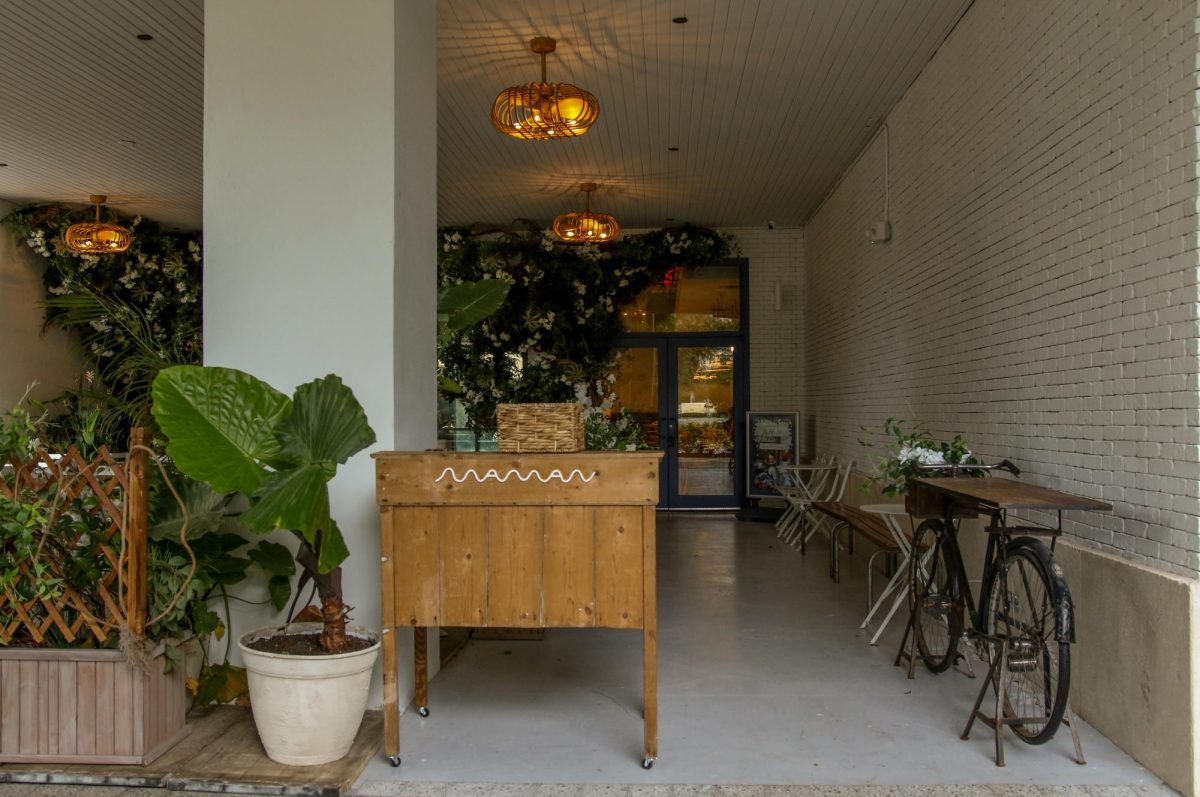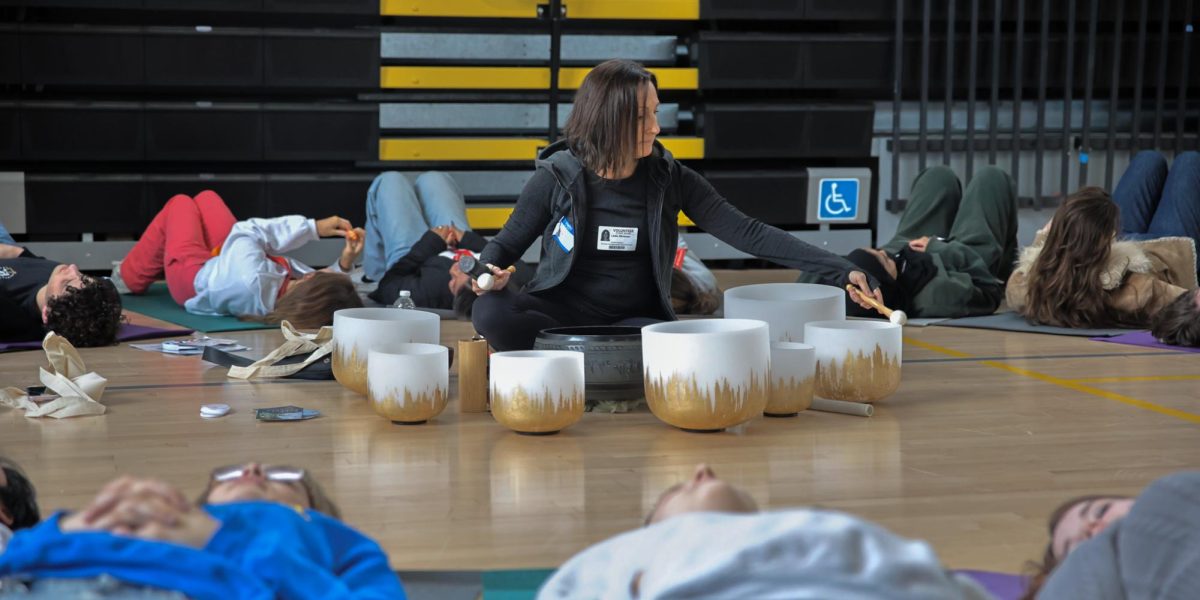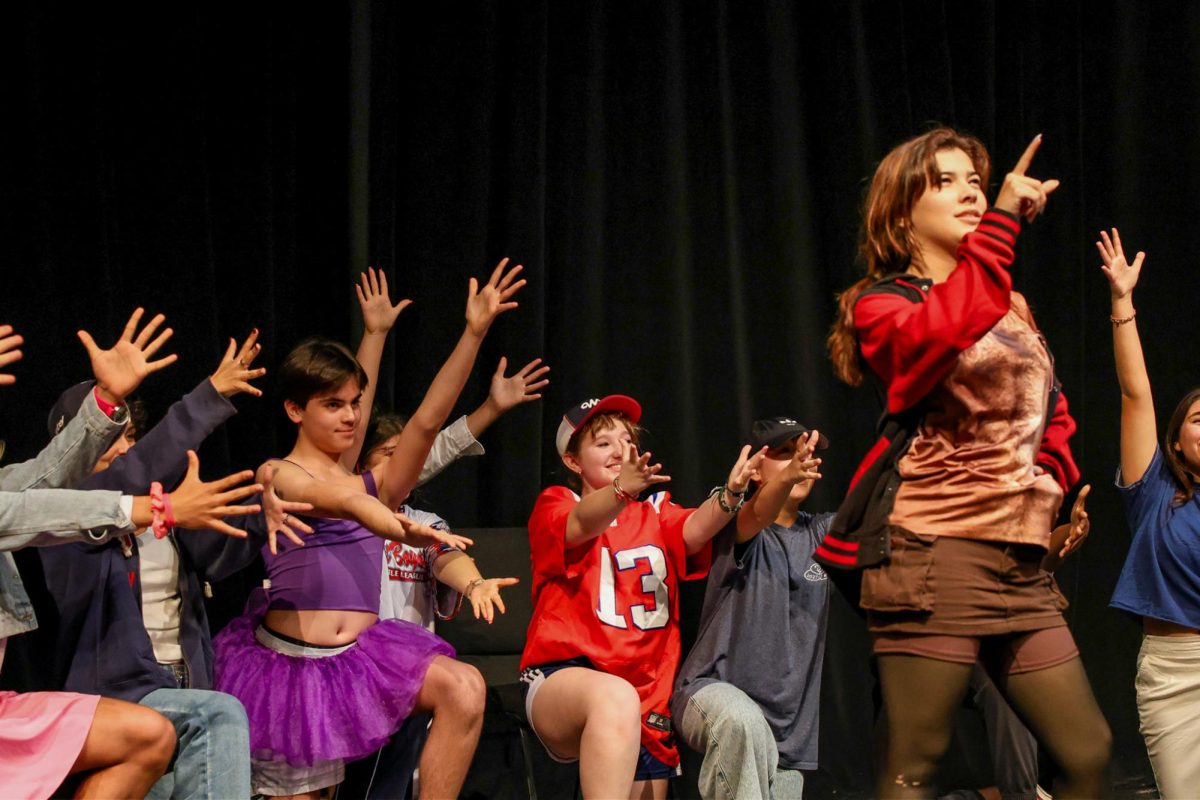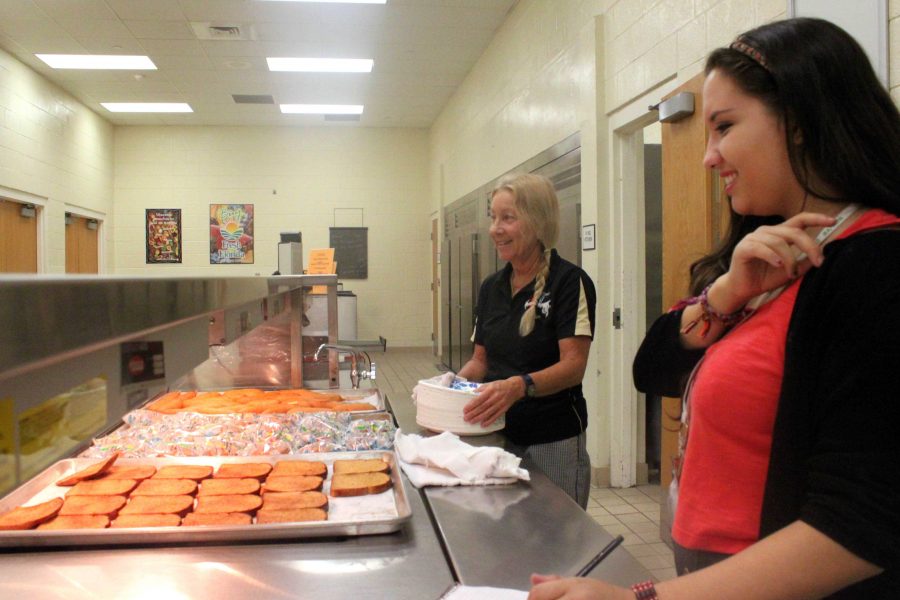If you have ever wondered how hot a breakfast corndog must be before the school district is legally allowed to serve it to students, the answer is 175 degrees. This is just one of the things I learned while shadowing cafeteria manager Amy Shaffer.
Every morning, after turning on the ovens, warmers, steamers and most importantly the kitchen lights, Ms. Shaffer sits at her office with not one, but two cups of iced coffee in order to prepare for the long day ahead. She looks at the calendar and sees what’s on the menu for the day. She signs on to her computer and makes the daily food options available on the electronic cafeteria registers.
At 6 a.m., Ms. Shaffer works on filling out market orders, while the rest of the cafeteria staff arrives between 7 and 8:30 a.m.
The 28-page market order, which she submits to the school food service every week, three weeks in advance, is made by studying the reports of item sales, which lets her know the kinds of foods students prefer.
“Yesterday for instance,” Ms. Shaffer said. “We sold 64 iced teas, 39 waters and 111 [cartons of] juice.”
Throughout the five years she’s worked at the school, Ms. Shaffer gained an understanding of which foods are popular and which are not.
“On chicken day, all the adults come down [to buy cafeteria lunch],” Ms. Shaffer said. “But when we make beef nachos we’ll be lucky if we serve seven.”
One of the hardest parts of being cafeteria manager is making sure everyone is fed without too much left over, since no food can be donated due to liability reasons.
“If you don’t like a product, come tell me,” Ms. Shaffer often tells students. “I don’t want to keep ordering things you don’t want to eat.”
While she fills out food orders, the rest of the cafeteria staff works on finishing breakfast and starting lunch. For example, after cafeteria staffer Cindy Packard arrives at 7 a.m. and parks the electric bike she rides to work every day, she changes into her cafeteria uniform and moves food from the warmers to the lunch line.
Ms. Packard is one of the first people that students see when they come in to school. Her assignment in the cafeteria, aside from washing dishes, is to serve breakfast and lunch as students pour in to the cafeteria.
“When I started [working at Dreyfoos,] it was strange seeing the different fashions and hair colors,” Ms. Packard said. “Now, I’m used to it.”
In the very back of the kitchen, next to the laundry room—yes, the cafeteria has its own laundry room—you can find an assignment board where each cafeteria staffer has a specific chore.
Cafeteria staffer Cecilia Korley is the second in command to Ms. Shaffer as well as the main cook.
“She’s kind of like the momma bear around here,” Ms. Shaffer said. “She’s the most hardworking woman I’ve ever met.”
Although there are a variety of ovens, pots, steamers and stoves, most of the food has already been prepared in some form or another.
“No meat ever comes in raw, for sanitation reasons,” Ms. Shaffer said. “It has its advantages.”
Among those advantages, is the meticulously detailed nutrition information in the official cookbook, which features a specific way of cooking every meal made in the cafeteria. The cookbook helps ensure the food is tasty and portions are well controlled. Aside from the main meal that is cooked every day, the cafeteria offers daily vegetarian options.
“I really do try to incorporate everyone’s beliefs,” Ms. Shaffer said. “There are salads, veggie burgers and subs. We’re working on getting gluten-free products.”
Ms. Shaffer, who has a business degree, managed a financial group before coming to the school, five years ago.
“Everyone has a vision of what a lunch lady is,” Ms. Shaffer said, opposing the stereotype. “If I didn’t work at this school I wouldn’t be doing this job; I love this atmosphere. [Working at Dreyfoos] is like having my own little restaurant. I have my own staff and customers.”

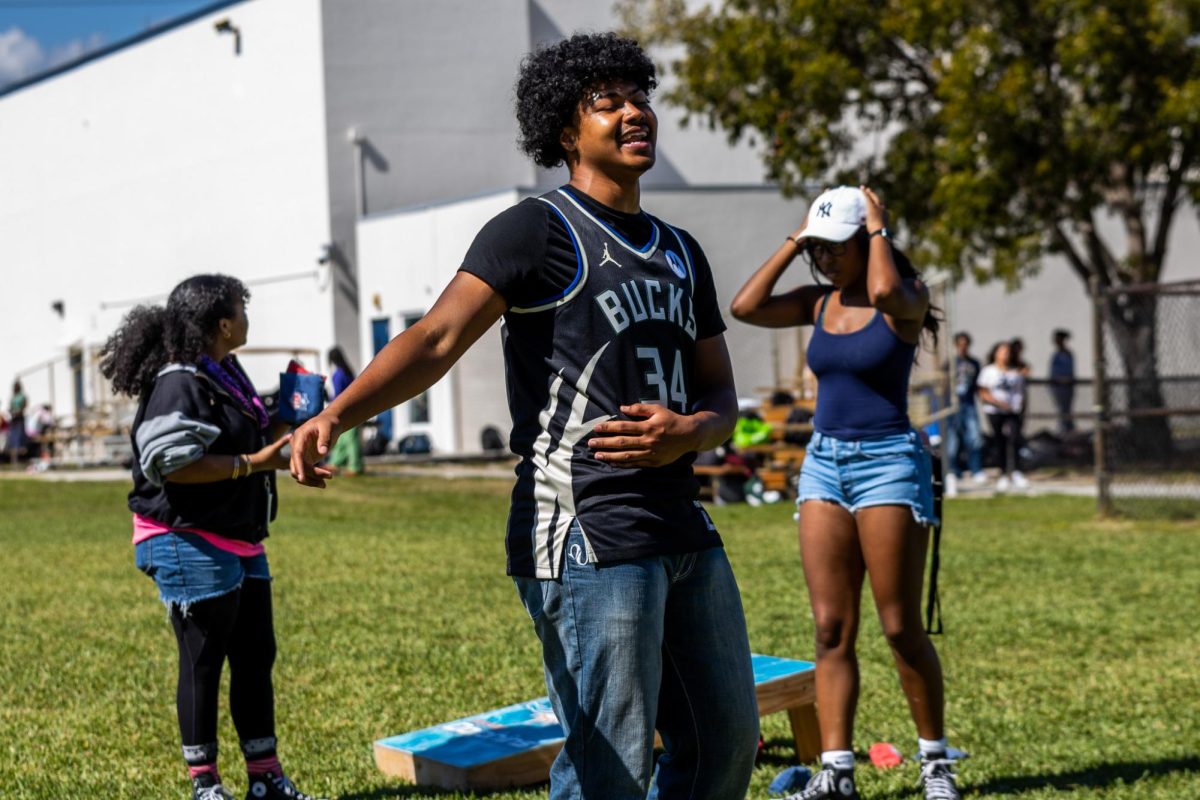






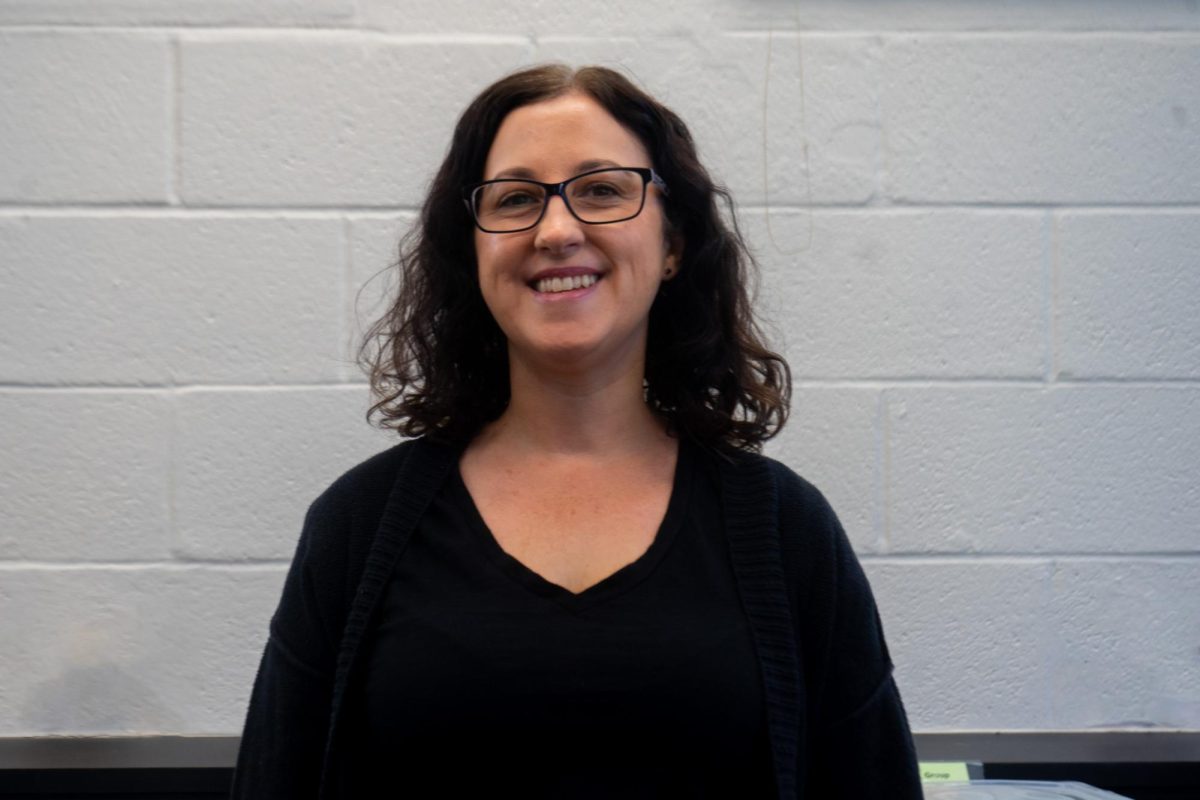

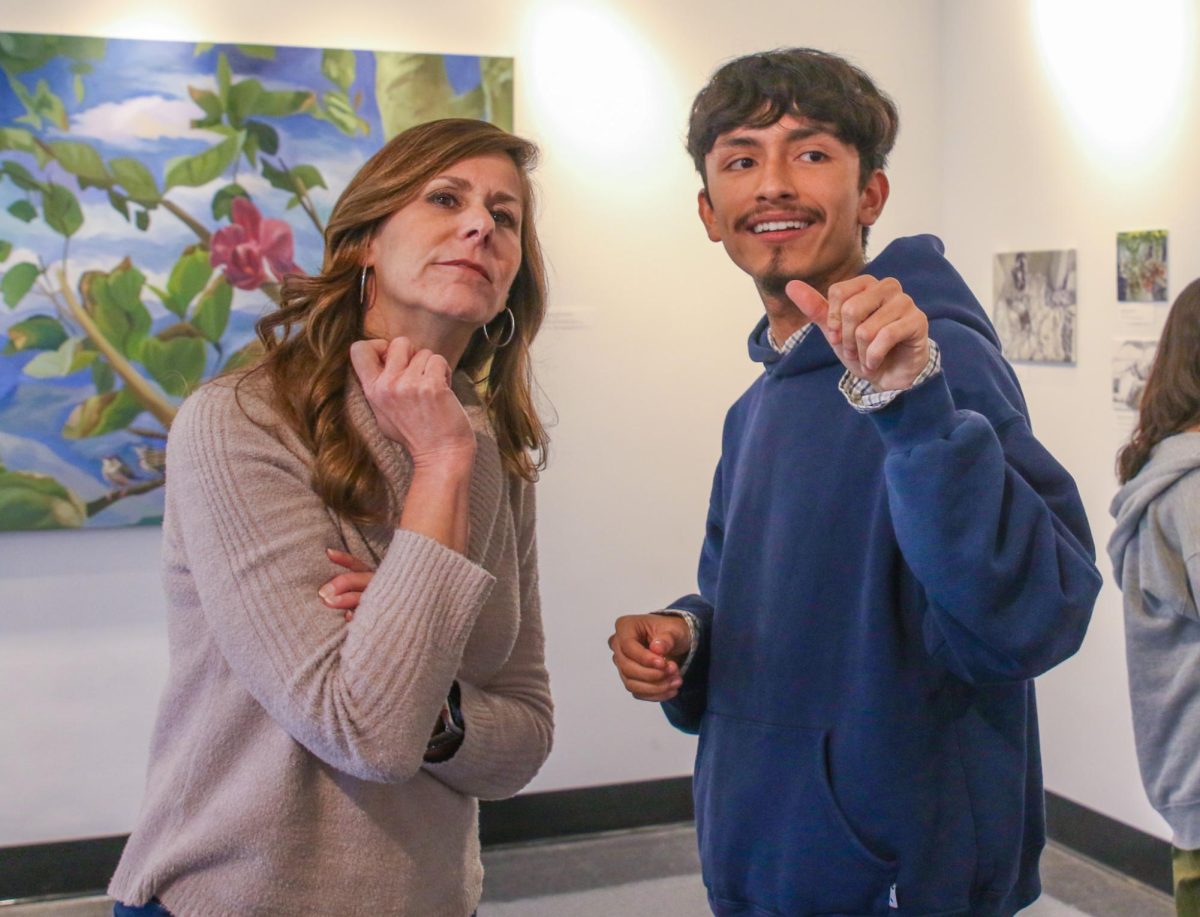
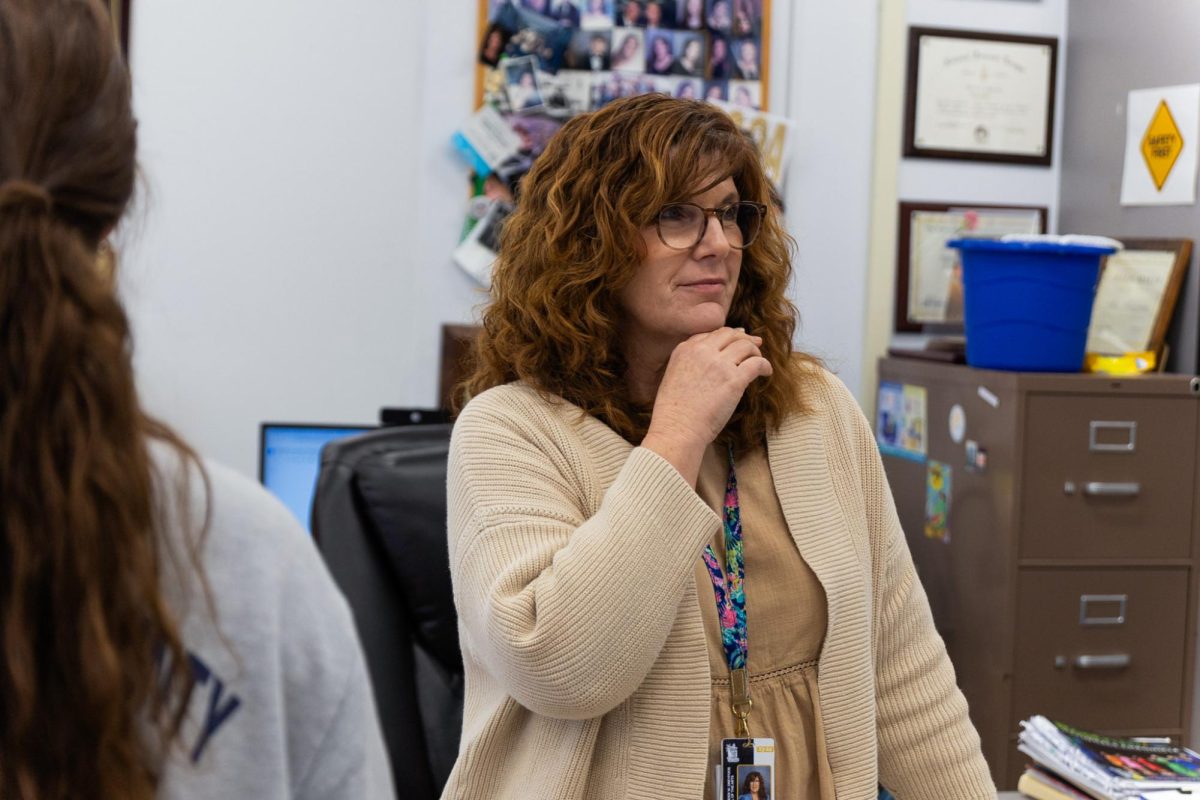
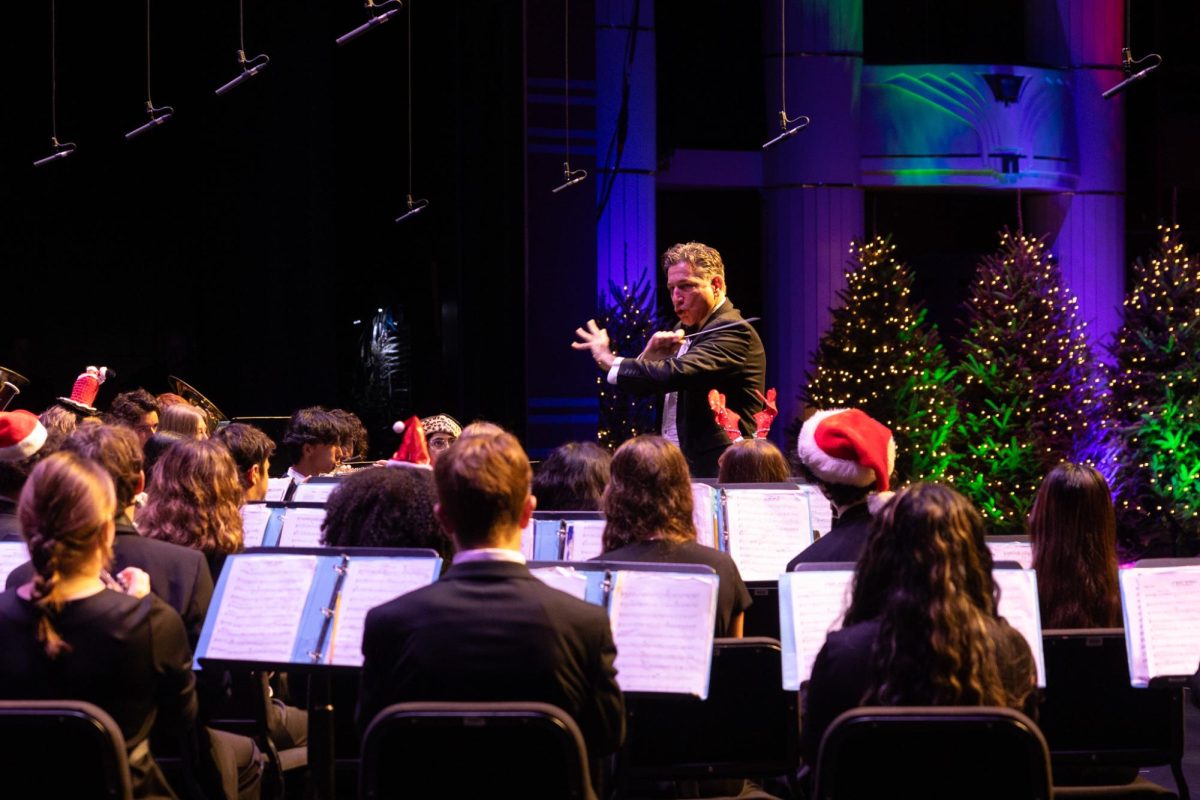


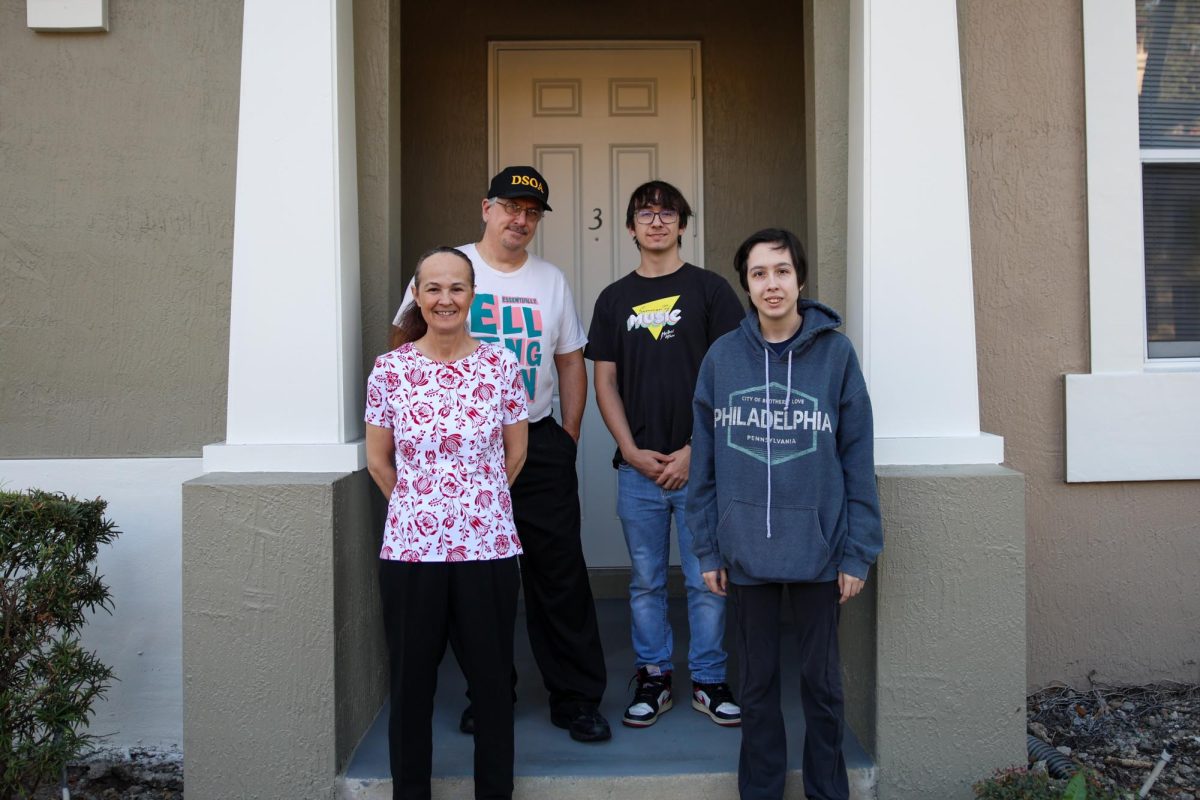


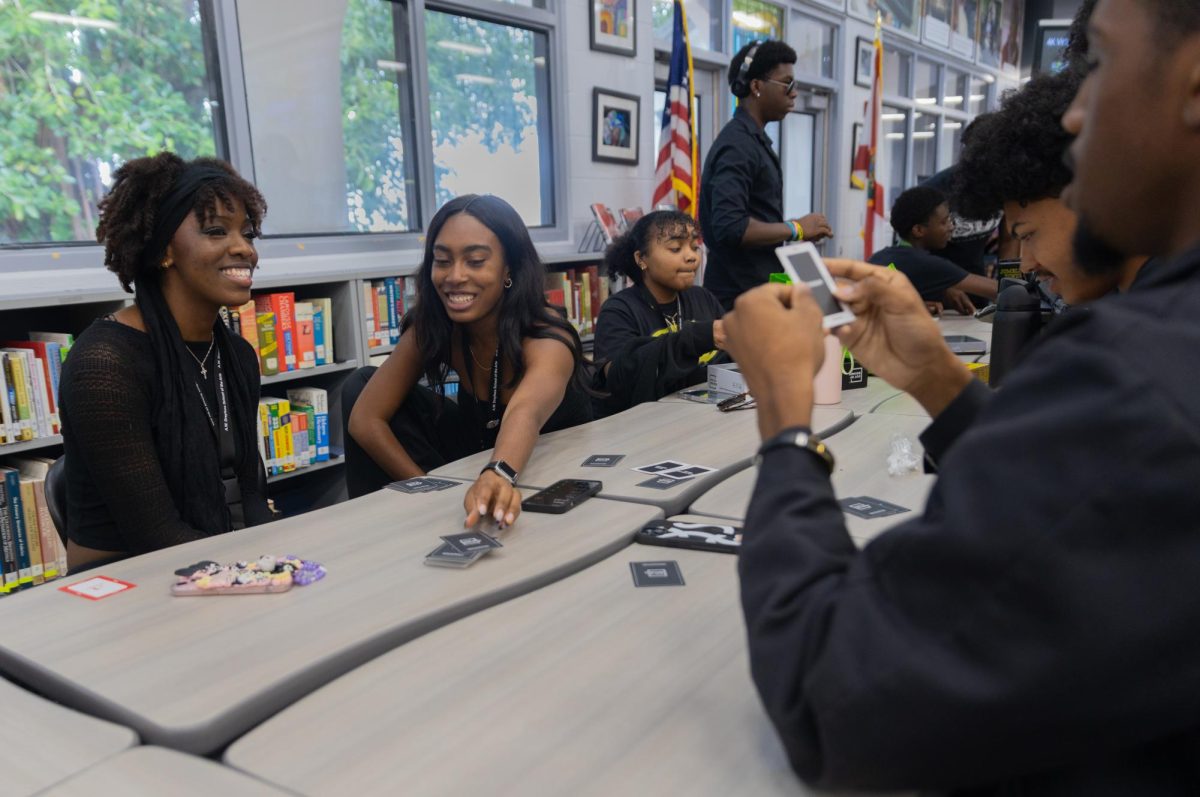

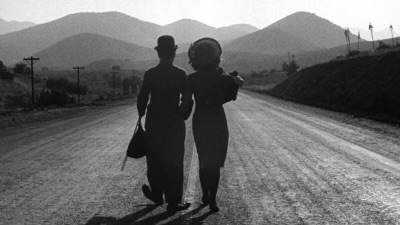





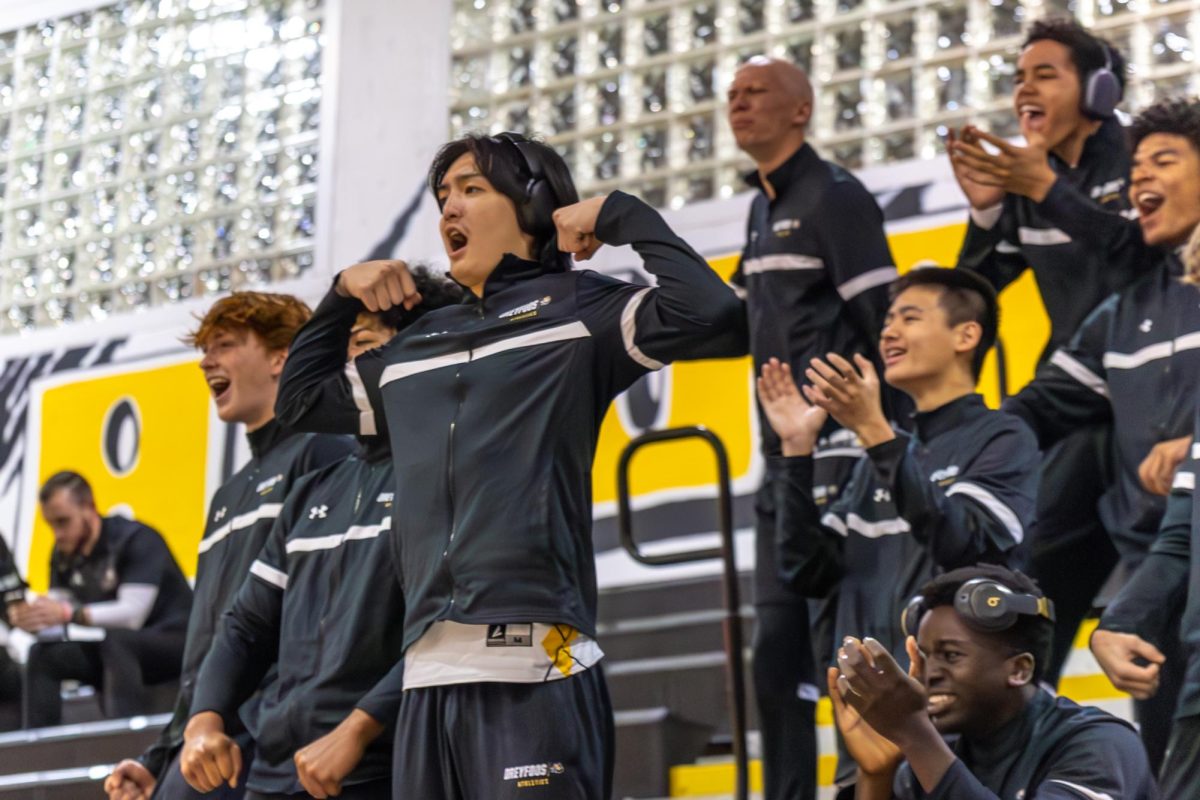
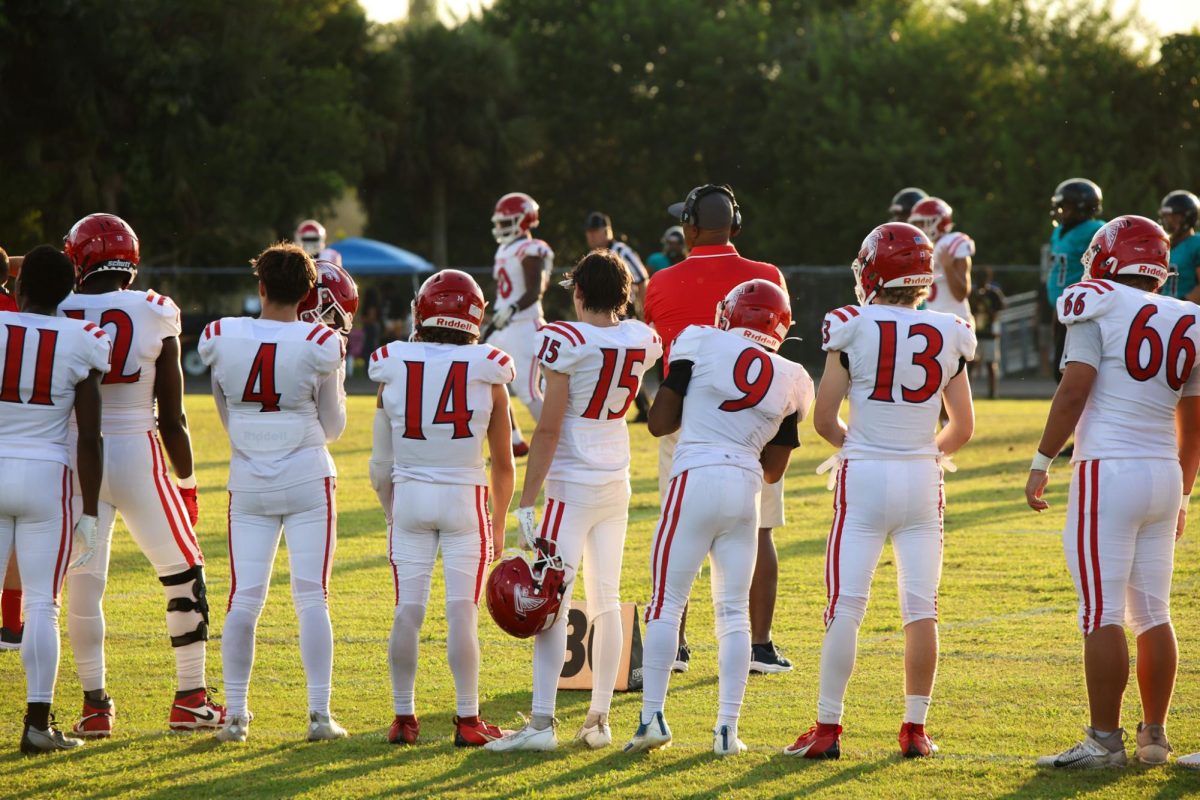

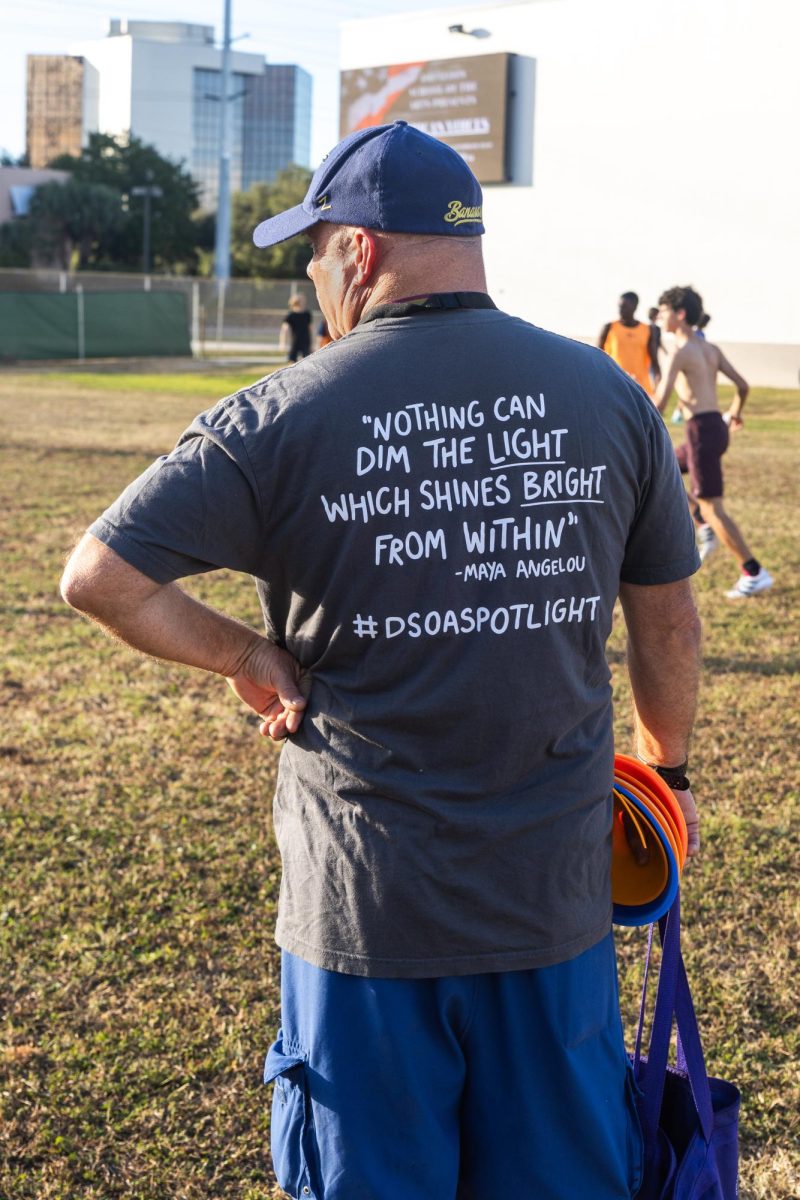
![[BRIEF] Boys Basketball Wins Close Game](https://www.themuseatdreyfoos.com/wp-content/uploads/2023/10/breaking-news-1200x927.png)

